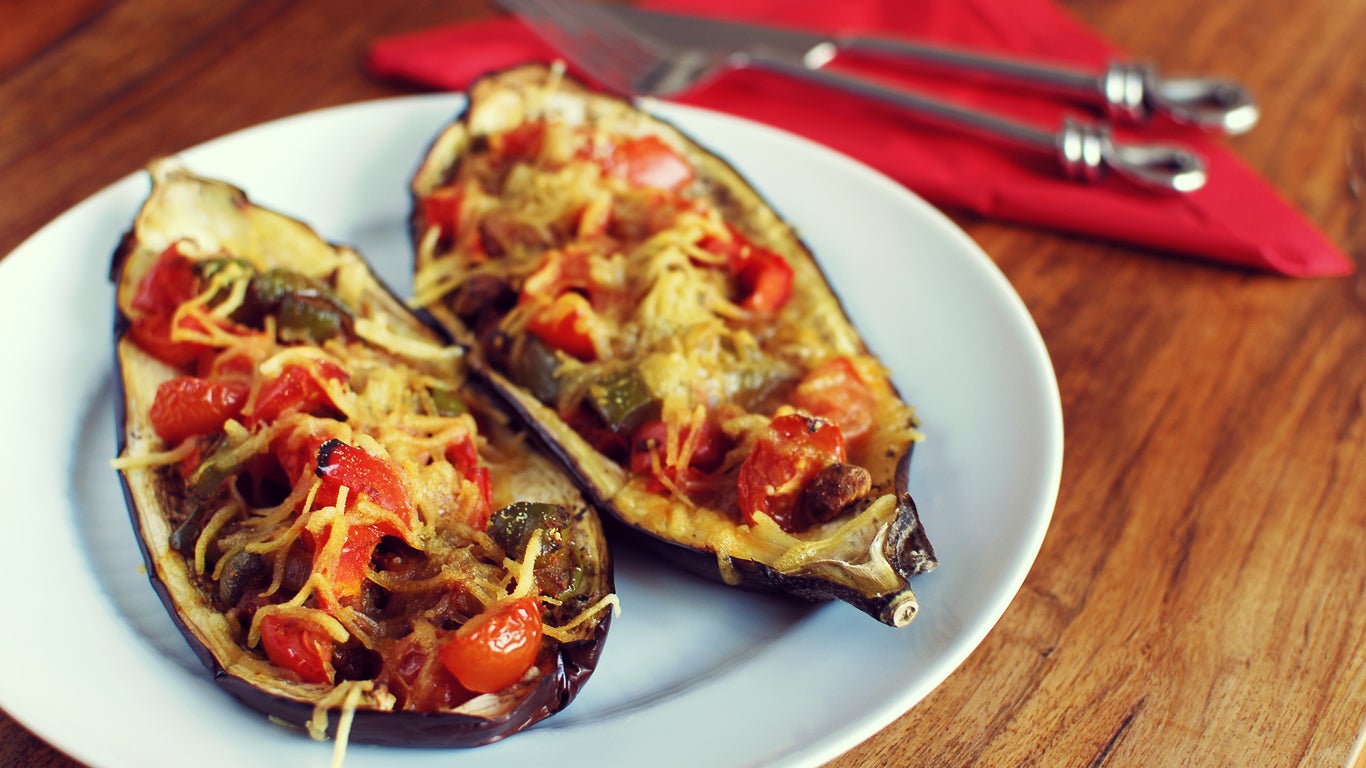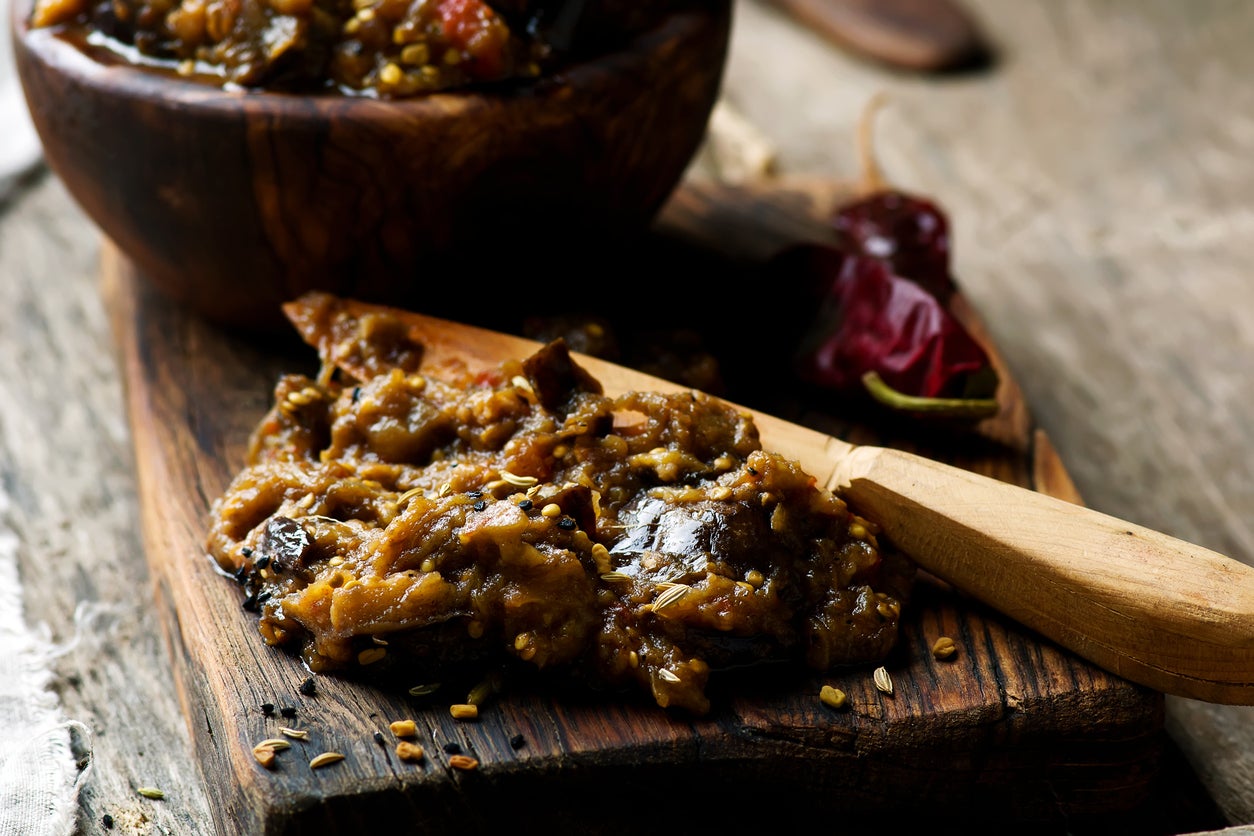How to cook Aubergines like a Sicilian

Your support helps us to tell the story
From reproductive rights to climate change to Big Tech, The Independent is on the ground when the story is developing. Whether it's investigating the financials of Elon Musk's pro-Trump PAC or producing our latest documentary, 'The A Word', which shines a light on the American women fighting for reproductive rights, we know how important it is to parse out the facts from the messaging.
At such a critical moment in US history, we need reporters on the ground. Your donation allows us to keep sending journalists to speak to both sides of the story.
The Independent is trusted by Americans across the entire political spectrum. And unlike many other quality news outlets, we choose not to lock Americans out of our reporting and analysis with paywalls. We believe quality journalism should be available to everyone, paid for by those who can afford it.
Your support makes all the difference.It’s hard to imagine Sicilian cooking without aubergine. You find it in every market, in every restaurant and certainly in every home kitchen. Having recently visited Sicily, I remember each aubergine binge fondly – and there were many.
It is always fascinating to see how cuisines and cultures collide. Sicily has been fought over and ruled by many peoples during the last 2,500 years, starting with the ancient Greeks. Each conquering group introduced ingredients from its home turf, adding layers to an ever-evolving local cuisine: the Greeks planted grapes and olives, the Romans contributed wheat.

But it wasn’t until the early Middle Ages, under Byzantine and Muslim rule, that aubergine became part of the everyday Sicilian diet. Aubergines, originally cultivated in South Asia, had long been a staple of Arabic cookery; now they are popular throughout most of the Mediterranean. The Spanish introduced tomatoes and peppers from the New World, two other ingredients that now lie at the heart of Sicilian cooking.
Sicilian cuisine today is varied, with beloved regional recipes and all manner of extravagant food for feast days, as well as incredible fish and shellfish from the coastline. But a recurring theme in daily cooking is the use of a few inexpensive, common ingredients: olive oil, aubergine, tomato and pasta, usually with a pinch of peperoncino, crushed hot red pepper. These are down-home, primal flavours, emblematic of so-called cucina povera, in which simple and delicious meals are made on the cheap.
Aubergine often stands in for meat. Slices dipped in breadcrumbs and pan-fried in olive oil replace lamb chops, or are rolled with cheese to make involtini. Aubergine salads, aubergine pickles, aubergine-heavy pasta dishes, stewed aubergine, stuffed aubergine, grilled aubergine – you find all these and more in Sicily.
Three of the most famous aubergine dishes are pasta alla Norma, aubergine caponata and aubergine parmigiana. For each, there are countless variations, sometimes vastly different one from the other. Here I offer my own take, inspired by my travels.
Pasta alla Norma is humble, traditional and justly famous. The 19th century composer Vincenzo Bellini is said to have adored it with such a passion (he ate it for lunch daily in his hometown, Catania) that the dish was eventually named after his opera Norma. You make a simple basil-infused tomato sauce, fry eggplant cubes in olive oil, toss both with pasta and shower with grated ricotta salata and toasted breadcrumbs. Or do you? Some cooks forgo the crumbs. Some fry large slices of aubergine and lay them over the pasta, or ring the platter with them instead.

Aubergine caponata is of Arabic origin, presumably, since it is stewed in oil, sweetened with sugar and spiked with vinegar. A kind of savoury preserve, it is often made in quantity and stored in jars for use throughout the year. This one has capers and green olives, but other versions contain raisins and pine nuts; I know a cook who includes a pinch of saffron. Some cooks add a lot of tomatoes, but I prefer just a touch of tomato paste. The seasoning is sweet, sour and salty, like a good pickle. Wait to taste it a day or two after it is prepared, so the flavours can fully meld. Serve caponata on little toasts as an starter or to accompany a meal – or as a picnic lunch with a loaf of crusty bread.
Aubergine parmigiana is often blanketed in tomato sauce, which makes this tomato-free version, which I learned from a Sicilian cook in a small town outside Palermo, rather unusual. She makes it by layering thinly sliced eggplant with tuma (a fresh curd cheese), caciocavallo, pecorino and Parmesan; I use fresh ricotta and smoked mozzarella for a similar effect. It is a bit like a lasagna without pasta. A dozen anchovy fillets are scattered on top. Those anchovies, melted into the crisp breadcrumb-and-cheese topping, provide a sharp contrast to the sweetness of the aubergine. I like to serve it at room temperature, with a tomato salad alongside.
These dishes taste best with spanking-fresh aubergine. Seize the moment at the market.
Baked aubergine with ricotta, mozzarella and anchovy
Serves 6 to 8
Time: 2 hours
Extra-virgin olive oil
3 or 4 small aubergines (about 1kg), peeled and cut into ½ inch slices
Salt and pepper
Pinch of crushed red pepper
1 small red onion, thinly sliced
340g fresh ricotta
225g smoked mozzarella, thinly sliced (or use fresh mozzarella)
225g provolone cheese, coarsely grated
55g cup finely grated Parmesan or Grana Padano cheese (about 2 ounces)
55g cup finely grated pecorino cheese (about 2 ounces)
12 anchovy fillets
25g cup toasted breadcrumbs, preferably homemade
1 teaspoon dried oregano, preferably Sicilian
Heat oven to 190°C. Generously oil a 9- by 13-inch baking dish. Season aubergine slices on both sides with salt and pepper. Arrange half the aubergine slices in one layer on bottom of dish, overlapping slices slightly. Drizzle or paint aubergine generously with olive oil. Sprinkle with crushed red pepper to taste and scatter onion slices evenly over surface.
With a small spoon, distribute the ricotta in little blobs evenly over surface, then arrange half the smoked mozzarella over the ricotta. Sprinkle with half the grated provolone.
Make another layer of overlapping slices with remaining seasoned aubergine. Drizzle or paint aubergine generously with olive oil. Top surface evenly with remaining smoked mozzarella and provolone, then sprinkle with Parmesan and pecorino. Arrange anchovy fillets over top and sprinkle with breadcrumbs.
Bake uncovered for 45 minutes to 1 hour, until eggplant is quite tender when pierced with a fork and top is crisp and golden. (If top seems to be browning too quickly, tent with foil and reduce heat to 175 degrees.) Remove from oven, dust with oregano and let rest at least 20 minutes before cutting into squares. The dish is best served at room temperature, not piping hot.
And to Drink ...
While aubergine is a central ingredient in each of these recipes, the different preparations suggest different wines. The pasta alla Norma will go best with a good red that is fruity but not too fruity, acidic but not too acidic. I thought first, naturally, of a Sicilian red, either a Nerello Mascalese from the Mount Etna region or a fresh Frappato from the Vittoria area. A Dolcetto from north-west Italy would also work well, as would a fresh, restrained Zinfandel. The sweeter caponata, if you are serving it with toast or solo, would go well with a dry rosé or an incisive white, like an Etna Bianco, made of the Carricante grape. While the baked aubergine would also go well with one of the Sicilian reds I suggested, a good Chianti Classico would be delicious.
Join our commenting forum
Join thought-provoking conversations, follow other Independent readers and see their replies
Comments